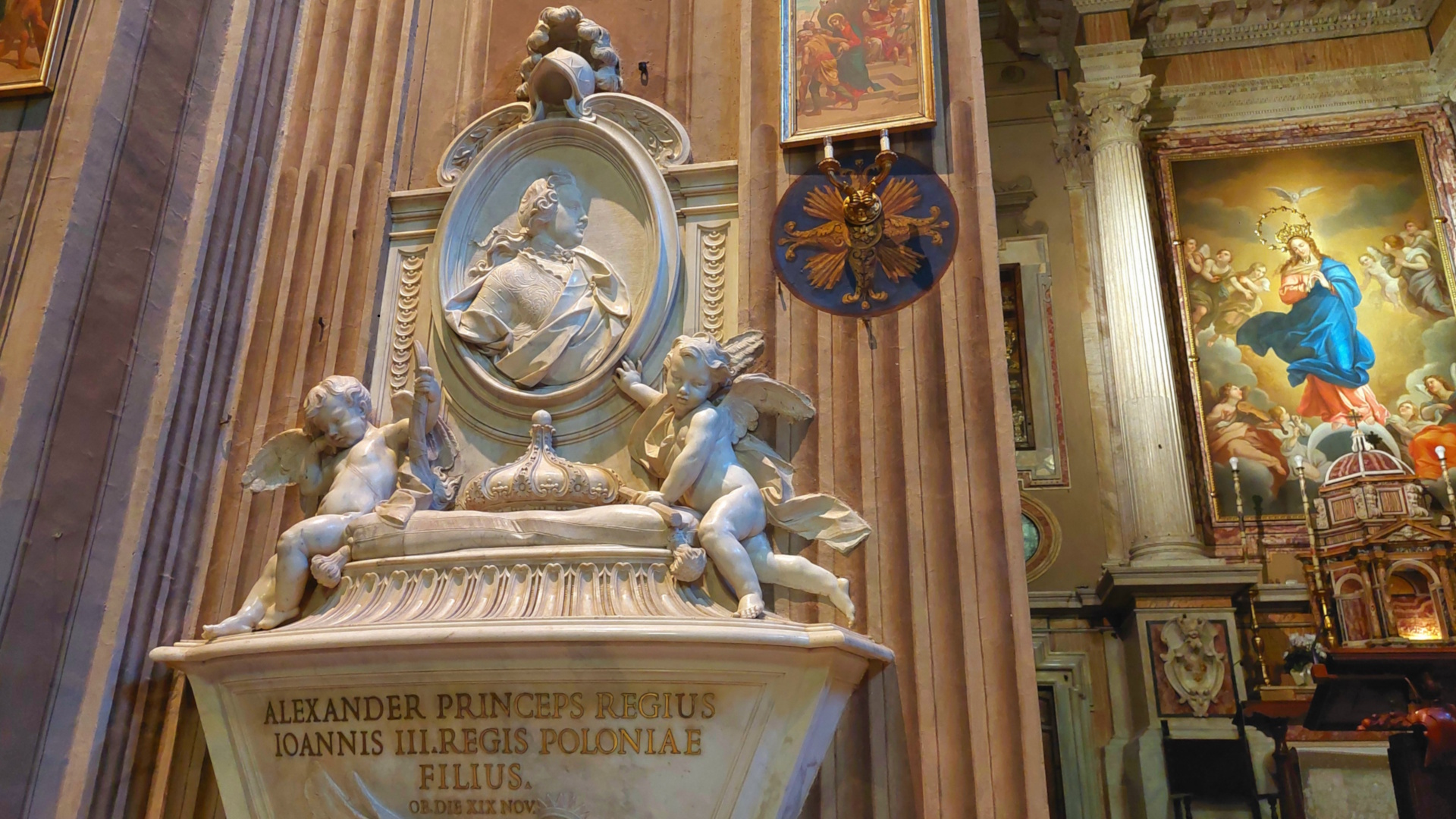
The Church of Santa Maria della Concezione of the Capuchins, which is more frequently referred to as Nostra Signora della Concezione, is certainly one of the most fascinating of the hundreds of churches in Rome.
Located in the famous Via Veneto, it was built near Palazzo Barberini by Pope Urban VIII, on the project by the pontifical architect Michele da Bergamo in collaboration with the architect Antonio Casoni, in honour of his brother, Cardinal Antonio Barberini.
Himself a Capuchin friar, Cardinal Antonio Barbarini’s tomb is still preserved inside the church opposite the high altar, with the words Hic jacet pulvis et cinis et nihil (Here lies dust, ash and nothing).
The interior has a single nave with 5 chapels on each side, raised and closed by wooden gates, and embellished with paintings, sepulchres, and relics.
Among the numerous artworks, there are: the Assumption by Liborio Coccetti, in the centre of the barrel vault, the Conception by Gioacchino Bombelli on the high altar, from the original by Lanfranco, destroyed by a fire; Saint Michael the Archangel by Guido Reni, Ananias restoring the sight of Saint Paul by Pietro da Cortona, Sant'Anthony of Padua reviving a dead man by Andrea Sacchi, Christ Mocked of Gherardo delle Notti, the Adoration of the Shepherds by Lanfranco and Saint Francis receives the stigmata by Domenichino.
Inside the convent, there is the Museum of the Friars Minor Capuchin of the Roman Province: eight halls that house artworks, volumes, documents, liturgical objects and commonly used Capuchins artefacts.
In the basement, there is the suggestive Crypt, the ancient Capuchin cemetery, built towards the first half of the 18th century and consisting of five chapels, decorated with the skulls and bones of 4000 friars, whose ornaments form rosettes, pilasters, stars, flowers, festoons, lamps and crosses. Each chapel bears the name of the bones with which the decorations were executed. According to tradition, the cemetery contains a holy soil, transported from Palestine or Jerusalem.
Information
For the timetable of the masses and visiting conditions, please consult the contacts.
 Condividi
Condividi
Location
To find out about all accessibility services, visit the Rome accessible section.











































